
If you’re shopping for metronomes, but can’t tell the difference between one and the next…
You’ve come to the right place.
Because in this post, we’re going to cover the 6 best options currently on the market…
And show you the key differences between each, to help you find the right metronome, for whatever it is you’re trying to accomplish.
First up…
1. The Best “Default” Metronome:
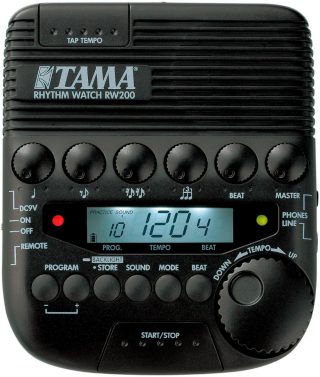
If there’s ONE metronome that’s ideal for the “average” musician…
Regardless of instrument, skill level, or whatever…
It’s the Rhythm Watch from Tama.
And here’s why:
If you’re a guitar player, and all you want is a simple click with a tempo that ‘s easy to adjust…it’s perfect for that.
If you’re a drummer, and you need a ton of programmable features…it’s perfect for that too.
And if you don’t have a ton of rhythm knowledge right now, but would like to learn in a way that doesn’t require you to read through a huge manual…it’s perfect for that as well.
The reason this metronome works so well for all types of musicians is that the user interface is extremely intuitive, and offers separate dials that you can adjust on the fly, for virtually everything.
So if a good all-around option is what you want, check it out:
- Tama RW200 – (Amazon/Sweetwater/Thomann)
Up next…
2. The Best “Minimalist” Option
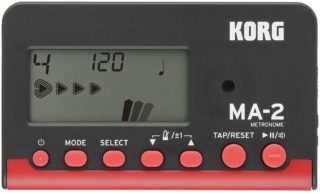
If you play guitar (or some other “non-rhythm” instrument)…
And all you want is a simple device that goes “beep beep beep beep“…
The Korg MA-2 is perfect for you.
And while it actually offers way more than just that…
If features are what you really want, there are much better options on this list.
Instead, the main appeal of the MA-2 is its small size and low price.
Another interesting function is the built-in reference pitches to help you tune your instrument.
It’s not as advanced as most other “tuner/metronome” combo devices that exist on the market…
But in a way, that’s actually a good thing, since many players prefer to tune with their ears, rather than with their eyes.
If all this sounds good to you, here are the links:
- Korg MA-2 – (Amazon/Sweetwater/Thomann)
Up next…
3. The Best “Feature-Rich” Metronome
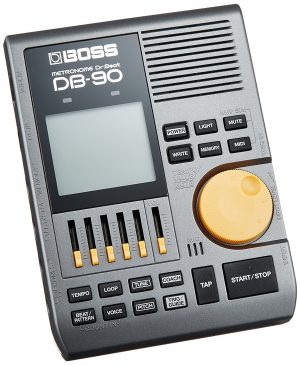
Now that we’ve covered the best all-around model, and the simplest model…
Let’s take a look at the Boss DB-90 which is undoubtedly the most advanced model of all.
While it’s not quite as intuitive as the Tama Rhythm Watch…
The steeper learning curve may be well-worth it to some…
Because it has a lot more features as well.
And while you might imagine that an advanced metronome would appeal to drummers only…
In this case, the opposite is actually true.
Here’s why:
First, there’s the human voice counter, which cuts through competing sounds, and is much easier to follow than simple clicks and beeps.
Then there’s the selection of actual drum rhythms to play along with, which is even better. Especially for non-drummers.
And finally, there’s the rhythm coach, which can actually monitor and track the progress of your playing using any one of several inputs including a built-in mic, trigger, or MIDI input.
Check it out:
- Boss DB-90 – (Amazon/Sweetwater/Thomann)
Also check out the “less-advanced” version in the Dr Beat Series:
- Boss DB-30 – (Amazon/Sweetwater/Thomann)
Up next…
4. The Best “Pulse” Metronome
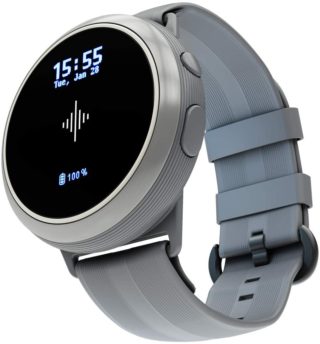
When digital metronomes first appeared on the market several decades ago…
It was hard to imagine that metronome technology could get any more advanced than it already was.
But then it did…
With a new generation of “pulse metronomes” which rely on touch rather than sound to communicate tempo to the user.
Rather than dealing with the competing sounds of your instrument and the metronome…
Pulse metronomes essentially divide them among two separate “senses”, so you can always feel the beat, even when you can’t hear it.
And the latest version of Soundbrenner’s pulse metronome is essentially the ideal smartwatch for musicians.
With the Soundbrenner Core, here are some top features worth mentioning:
- App Integration – which allows you to control the device directly from your smartphone.
- Multi Player Syncing – which allows you to sync your entire band (up to 5 devices) to the same click.
- DAW Integration – which allows you to automatically align with the bars and beats of your recording session.
- Tuner – it’s also a contact tuner, meaning you can use it in loud environments too
- Decibel Meter – a pretty convenient tool, especially when playing in small venues
Pretty cool, huh? Check it out:
- Soundbrenner Core – (Amazon/Sweetwater/Thomann)
Up next…
5. The Best “Purist” Option
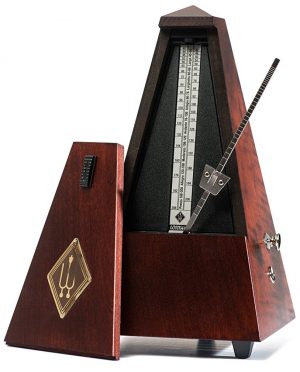
Prior to the rise electronic and digital devices…
Wooden mechanical metronomes were the standard tool for keeping musical time…
Ever since they first appeared back in the early 1800’s.
If you’re a piano player, chances are you’re already thoroughly familiar with them.
And if you play anything else, you’ve probably still seen one at your grandma’s house, sitting atop her old dusty piano.
The question is though…with all of today’s modern technology…
Why would anyone still use this ancient device?
And it’s a fair question…since it’s the least portable, least accurate, easiest to damage, and in many cases…MOST expensive of all metronome designs.
Which is why for the vast majority of musicians I would NOT recommend them.
The only arguable upsides of mechanical metronomes are that they’re super easy to use, and they also look pretty cool as well…
Which alone…are not enough to choose them over other options we’ve covered so far.
Instead, the ONLY people that should be using these, are musicians who’ve already been using them happily for many years, and see no good reason to switch to something else.
After all…If it ain’t broke, don’t fix it…right?
So if you happen to fall into that category, here are a few top models to check out:
Up next…
6. The Best “Quartz” Metronome
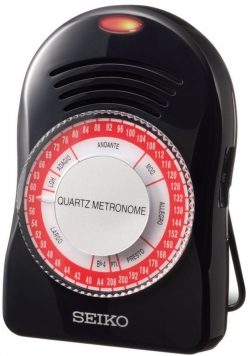
While not quite as old as the mechanical metronomes we just covered…
And not quite as new as the digital metronomes we saw in the beginning of this post…
There’s one final category known as “quartz metronomes“…
Which keeps time using a battery-powered quartz crystal, similar to what you’d find in some wrist watches.
The appeal of these metronomes is that they essentially offer the best of both worlds (in a way):
- They’re as simple to use as mechanical metronomes…
- Yet they’re as light, portable, and reliable as digital metronomes.
Which is why they’re a favorite of those musicians who don’t see a need for the more advanced features that today’s modern metronomes tend to offer.
If that sounds good to you, here are some of the top models in this category:
By the way, if you found this post useful, I highly recommend joining our free Home Recording Secrets email newsletter where you’ll discover….
- How to Get Your First Studio Up and Running in a Single Weekend
- How to Avoid Wasting Thousands of Dollars on Unnecessary Pointless Purchases
- How to Get a “Million Dollar” Pro Studio Sound in a “Thousand Dollar” Home Studio
- PLUS… All Sorts of Other Amazing Insider Secrets Revealed
And it’s totally FREE! Click here and Enter Your Email to Sign Up.
More Drum/Percussion Posts in this Series:
Drum Sets | Electronic Drums | Snares | Drumheads | Cymbals | Djembe | Bongos | Cajon | Conga | Cowbell | Tambourines | Vibraphones | Xylophones | Marimbas | Glockenspiels | Metronomes | Drum Thrones | Drumsticks | Ride Cymbals